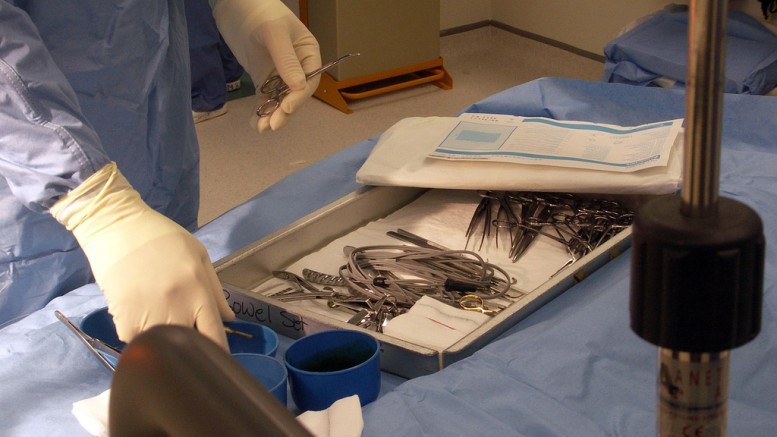Orthopedics is a medical specialty concerned with the musculoskeletal system of the human body, which consists of bones, joints, muscles, ligaments, tendons, and nerves. An Orthopedic spine surgeon is a physician who has additional training and experience in the management and therapy of spinal illnesses and disorders.
Orthopedic spine surgeons serve patients of all ages, but some specialize in treating kids (pediatric) or adults. Certain orthopedic spine surgeons specialize in treating certain spinal conditions, such as scoliosis, degenerative diseases, or a specific area of the vertebrae (cervical/neck, lumbar/low back).
Each year, back discomfort is one of the most popular causes for people to seek medical assistance. Persistent backaches can be disruptive to your career and personal life. Back discomfort can be caused by spinal disc deformities, instability, injury, or degeneration.
Numerous non-surgical and surgical treatments are able to facilitate the treatment or management of back problems, so, even though doctors will always attempt to treat back problems using non-surgical means, there are still instances wherein getting surgery is the only viable option.
If your doctor determines that your spinal discomfort or condition cannot be resolved non-surgically, he or she may propose spine surgery. Your doctor may prescribe one of many spinal operations depending on the true cause reason of your back pain.
Common Orthopedic Spine Procedures
Below are some of the common orthopedic spine surgeries:
Discectomy or removal of slipped discs
A discectomy is a surgical procedure performed by the removal of herniated discs (also known as slipped discs). A herniated disc arises when a piece of the disc ruptures through the resistant external part and penetrates the spinal canal. Discectomy operations include the following:
- The Percutaneous Discectomy is a type of procedure that removes one part of a herniated disc that is the root cause of the pain by reason of nerve compression.
- The Microsurgical Discectomy is a type of procedure that treats herniated disc problems by way of a less invasive surgical procedure.
- The Anterior Cervical Discectomy and Fusion is a type of procedure that takes out a herniated disc that is found in the neck and this can be simultaneously performed on degenerative discs in the neck
- Another procedure is known as Lumbar Discectomy which is the removal of the herniated or degenerative disc located at the lower part of the spine.

Laminectomy or removal of the dorsal side of the spinal canal
What is being removed during laminectomy is the lamina or the dorsal side of the spinal canal. This surgery is also used to assist expand the vertebral column in individuals with spinal stenosis. It contributes to the relief of pain caused by nerve root tension.
Relieving pressure in the foramina or foraminotomy
Foramina are passageways through which veins, muscles, and other structures can flow to connect to different parts of the body. This surgical treatment alleviates tension on nerves provoked by intervertebral foramina compression.
Removal of the vertebral body or corpectomy
The term “corpectomy” refers to the excision of the vertebral body. Bone grafts are typically used to replace removed bones during a surgical procedure called bone grafting. A corpectomy corrects and relieves the pressure associated with complicated broken bones.
Fusing two small bones in the spine or spinal/lumbar fusion
As the names suggest, this condition involves the fusion of two relatively tiny bones in the spine. People with spinal stenosis, a constriction of the spinal canal, frequently undergo spinal fusion.
Inserting a spinal cord stimulator or spinal cord stimulation
The skin is being inserted by a spinal cord stimulator in order to transmit enough amount of electrical impulses to the brain in order to block pain signals.
An epidural shot is a non-surgical technique that helps to alleviate discomfort. This operation is performed on the region surrounding the spinal cord. The pharmaceutical dosage provides transient pain alleviation.
The Most Frequently Asked Question By Patients is As To How Much Will a Spine Surgery is Going to Cost
Most people consult their doctor after the discussion about their surgical alternatives and are commonly asking, “How much will my spine surgery cost?” The reasoning for this is quite understandable—people would like to stay healthy, but they don’t want to blow the budget while doing so.
The price of spine surgery might vary depending on which insurance company a patient uses.
Get a Good Understanding of Your Orthopedic Insurance Benefits
It might be difficult to know which health insurance policy one should choose, especially when there are so many plans and levels of coverage. Since it is so vital to spend time familiarizing yourself with how your policy’s benefits function, it’s also necessary to spend time getting to know your financial goals. Consult with your insurance carrier directly to find out what perks your specific insurance plan offers.
Below are the elements of your insurance that are associated with your personalized coverage that will dictate the total amount you will have to pay extra for spine surgery:
- Co-payment, or co-pay which is a set fee for insured medical treatment. Your co-pay may vary depending on the service, for instance, you may be required to pay a specified co-payment for just an initial appointment, hospitalization, or prescription medicine.
- Many insurance policies require you to pay a deductible, which would be the sum you must pay out of pocket per year once your health care coverage begins. Ascertain that you are aware of your deductible and the extent to which it has been met. Some plans have deductibles as little as $500, while others have deductibles in the thousands. Your deductible and out-of-pocket expenses will differ based on whether you visit an in-network or out-of-network provider.
- Co-insurance is the proportion of medical expenditures that you will bear versus what your insurer will cover if your deductible is met. For instance, if your insurance covers 80% of your expenditures, you are still liable for the other 20% until you reach your out-of-pocket maximum. This cost varies according to your insurance type and if your provider is inside or outside of the network.
- Out-of-pocket cap – This is the maximum amount you may spend on healthcare in a calendar week when your insurance begins paying 100%. Your co-pay, deductible, and co-insurance would all be taken into account when calculating your out-of-pocket limit.
